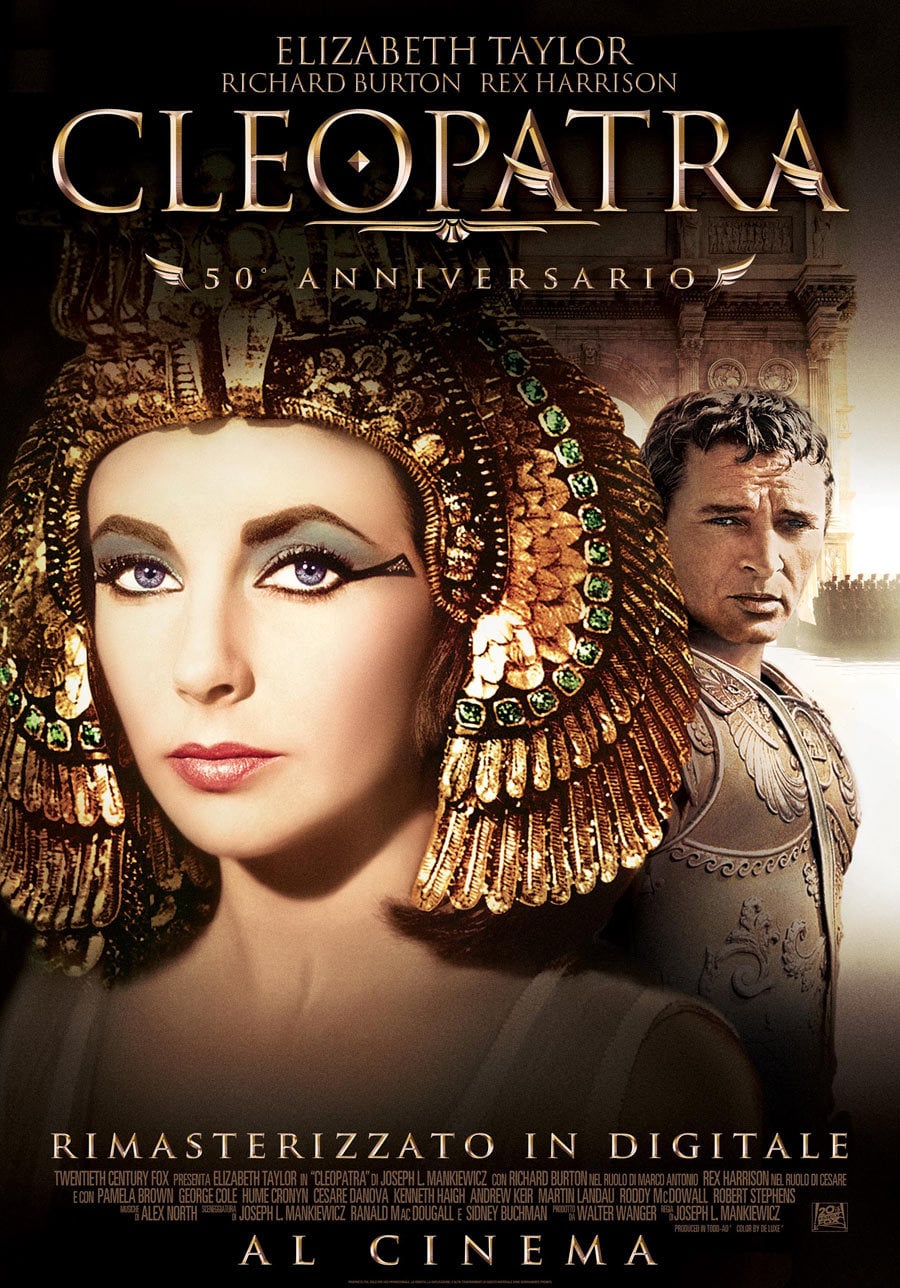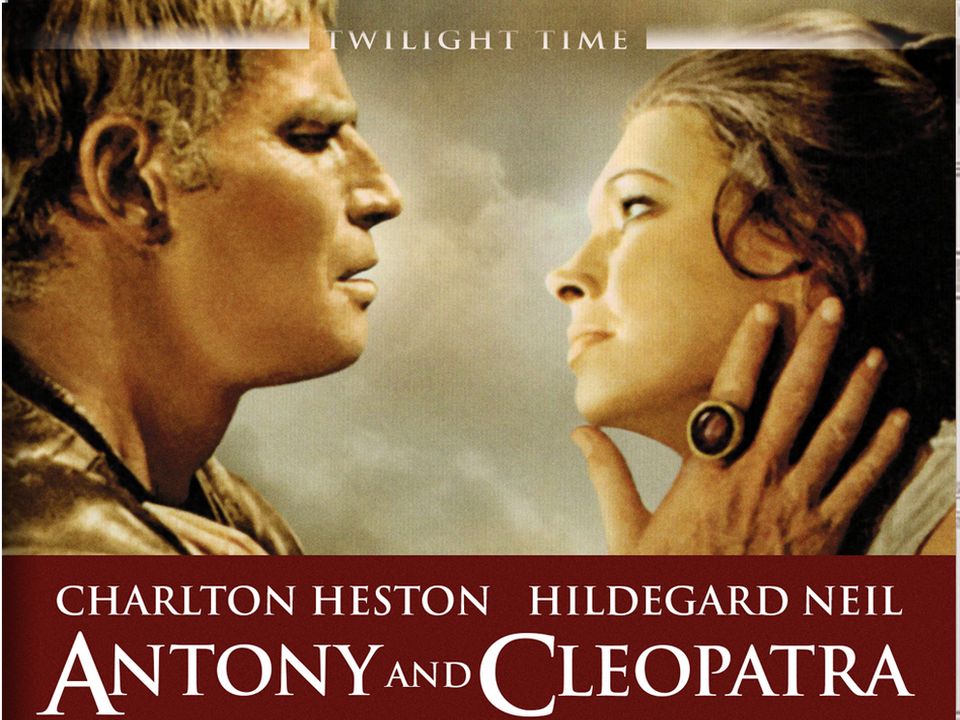

According to the internet, there are almost as many movies about the famous woman in ancient history as there are biographies. Even so, classicists tell us that many myths continue to surround Cleopatra. Apparently she wasn’t even good-looking, at any rate according to the coins struck during her reign which lasted from around 51 BC-31 BC. Next, she wasn’t really Egyptian anyway but was from a long line of Greek pharaohs.
It is not even sure she committed suicide with a snake’s bite as this tale did not appear in ancient sources until 200 years later. In any case, asp bites don’t kill quickly and could leave you writhing in agony for hours. Just as likely the conquering Romans murdered her following the Egyptian naval disaster at Actium. At the end she was cooped up in her private quarters and tomb in Alexandria.
Still, cinema goers love stories about powerful women – particularly heterosexual ones – which probably explain the queen’s durability in Hollywood and beyond. However, Cleopatra has been represented in many different ways in the movies: cynical or naïve, beautiful or plain, hot sex or cold news, warrior or coward, ambitious or cautious. In the list below, which is far from exhaustive, we look at the many faces of Cleopatra, the last pharaoh of Egypt before the kingdom was swallowed up in the expanding Roman empire.
Cleopatra 1899
This was the earliest of the silent films and lasted only a few minutes. Obviously, there was no time to describe her tangled love life or political ambitions, so the writers simply showed the queen’s mummy being burned at her tomb in Alexandria. This was obviously a bad idea as she rose from the dead, glared at the camera and shuffled off into the night. Some contemporaries said there was a strong suspicion she had become a vampire. No way of telling now.
Antony and Cleopatra 1908
Another silent version, based roughly on Shakespeare, but telling of her famed romances with two Roman generals Julius Caesar and Mark Antony (though not at the same time). There was no time in a silent movie to go into detail, so cinema audiences saw two bedroom scenes in very quick succession. Apparently, come US cinemas refused to show this version in case the morals of the public were compromised by the suggestion of impropriety.
Caesar and Cleopatra 1945
The script was adapted after suggestions from George Bernard Shaw. Vivien Leigh played the temptress royal whilst Claude Rains posed as Julius Caesar by whom she had a son Caesarion. The movie concentrates on showing how Claude tried to referee the political and constitutional crises created by Cleopatra and her brother Ptolemy, both of whom disliked competition in the rush to be sole pharaoh. Of course, the vixen won and Caesar soon fell hopelessly in love with her.

Serpent of the Nile 1953
An el cheapo movie which used sets left over from an earlier film Salome as well as starring Rhonda Fleming wearing those winged and padded bras which were popular in post-war America but entirely unknown in ancient history. Mark Antony was played by Raymond Burr who was probably relieved, as a gay guy in real life, that his relationship with the Egyptian queen soured quickly after a couple of intimacies. Incidentally, this was the first Cleopatra movie to suggest she was interested in other men apart from army generals: she offered to sleep with a mere captain but was turned down.

Two nights with Cleopatra 1954
This one started Sophia Loren who later said she had made a mistake getting mixed up with it. It concentrates on the one (maybe two) night of pleasure she had with one of Mark Antony’s bodyguards who had to be poisoned hours later so that he would not and could not spill the beans. There is some confusion in the movie whether the bodyguard thought he was sleeping with a slave rather than Cleopatra, but his early death ruled out any detailed investigation. Not one of Loren’s most scintillating performances.

Cleopatra 1963
Of course, this is the version everybody has seen and it lasts 251 minutes you recall. The movie details a lot of the political history background, especially in the early scenes as Rex Harrison (as Julius Caesar) wrestles with palace intrigues and armed rebellions. Later Richard Burton takes over as number one and spends his time partying in Alexandria rather than securing his fraying position in Italy. The movie was the highest grossing production of 1963 and was the only Hollywood enterprise to show realistically the sea battle of Actium, off the coast of Greece, which was lost as Cleopatra and Antony fled the scene in their barges.

Antony and Cleopatra 1972
This was directed by Charlton Heston (after Orson Welles turned down the offer) who also starred as Mark Antony. There is nothing to say in its favour except that it is one of the very few Cleopatra movies which mentions her rebellious sister Arsinoe, sadly renamed in some internet commentaries as Our Snowy. The battle of Actium is briefly depicted with footage taken directly from the 1959 Ben Hur, another of Charlton Heston’s movies. What a nerve!
 |
 |
 |




